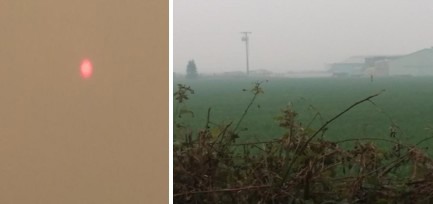
On the left: Smoke blocking the sun. On the right: smoke hovering over the plants. For further information on the fire, please check www.ChetcoBarFire.com "Oregon's Largest Wildfire".
Rainy and cold weather
According to the experts, the heavy rains resulted in major problems controlling the weeds. "The planting stock, that went into the ground last summer/fall, endured 133 inches (3380 mm) of rain since the beginning of the cycle. This caused the herbicides (weed prevention) which were applied in early spring to totally wash away, resulting in weeds almost overtaking the crop. Even after the fields were dry enough to manually weed the crop, it was a major problem to keep up with the weeds." On top of that, they experienced colder-than-normal temperatures over the last 25 days. "It did not help the situation", they added.
Wildfires in Chetco area
However, in spite of the setbacks, the crop improved. Until the third strike hit. "This was a never-seen-before situation with the wildfires in the Chetco area where 200,000 acres of fires burned for weeks on end. For four weeks, during the most critical time for the bulbs, the plants received no direct sunshine which reduced chlorophyll production and stymied bulb growth so that the bulbs could not produce the much-needed sugars. Consequently, no large bulbs were harvested this year. "
Better core
On the flip side of all this negativity, it appears that the core may well be better than the bulb sizes indicate. According to the Gloeckner / Ednie specialists: "We will be more vigilant than ever to closely monitor this crop during vernalization to ensure the highest possible bud count. We will provide extra assistance where needed during the crop forcing cycle. This is not easy, looking at the early Easter date of April 1, 2018.”
Ednie Flower Bulbs
www.EdnieFlowerBulb.com
Fred C. Gloeckner & Company
www.FredGloeckner.com
